It’s hydrangea season and they are everywhere! But where are the bees?
Have you noticed that bees happily buzz around some hydrangeas while ignoring others? The difference is striking with these two hydrangea shrubs seen blooming side-by-side:
What accounts for the difference?
You might reasonably guess that native hydrangeas would be more attractive to native bees than Asian varieties, because that is often the case with other plants. Insects in North America usually prefer the plants with which they co-evolved, so non-native species are much less useful to them. But in the video above, both shrubs are non-native hydrangea varieties. So, what’s the difference to the bees?
When it comes to hydrangeas, it’s the shape of the flower that matters – at least to bees! And since 25% of native bee species are in sharp population decline, we really must care about what’s important to bees.
Hydrangea flowers, properly called “panicles,” are typically one of three shapes: “mophead,” “lace-cap,” or “conical” (cone-shaped).
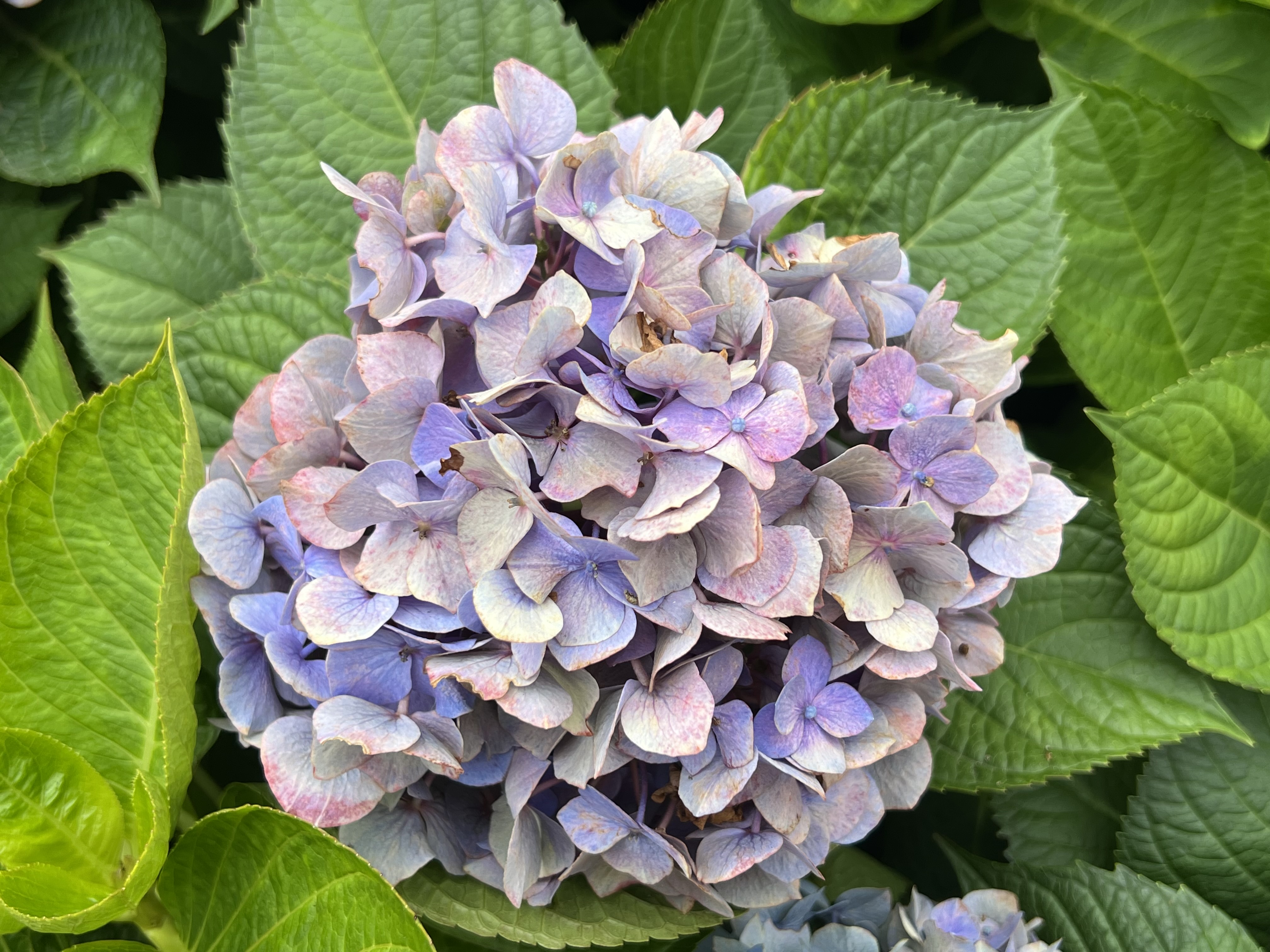
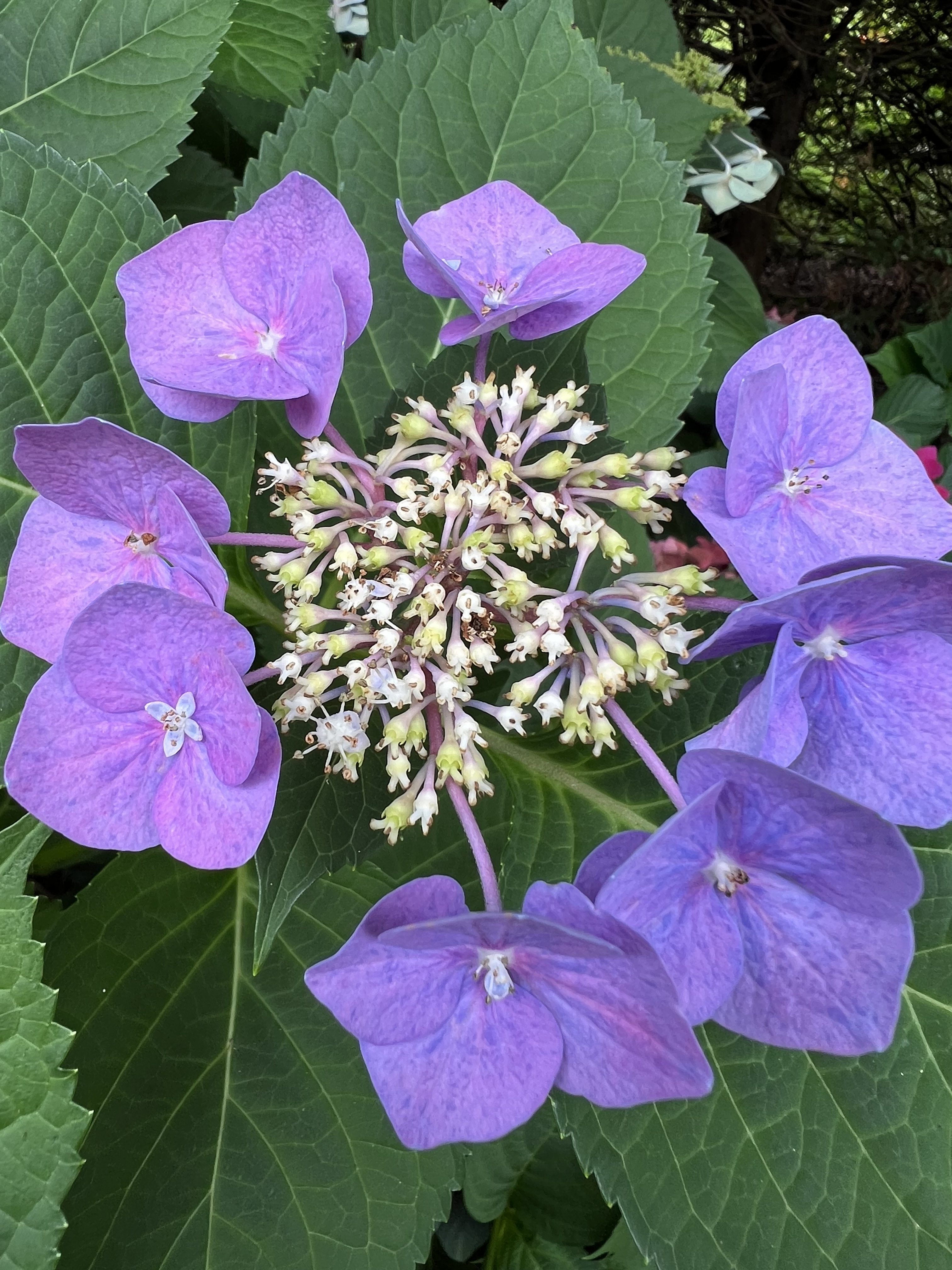
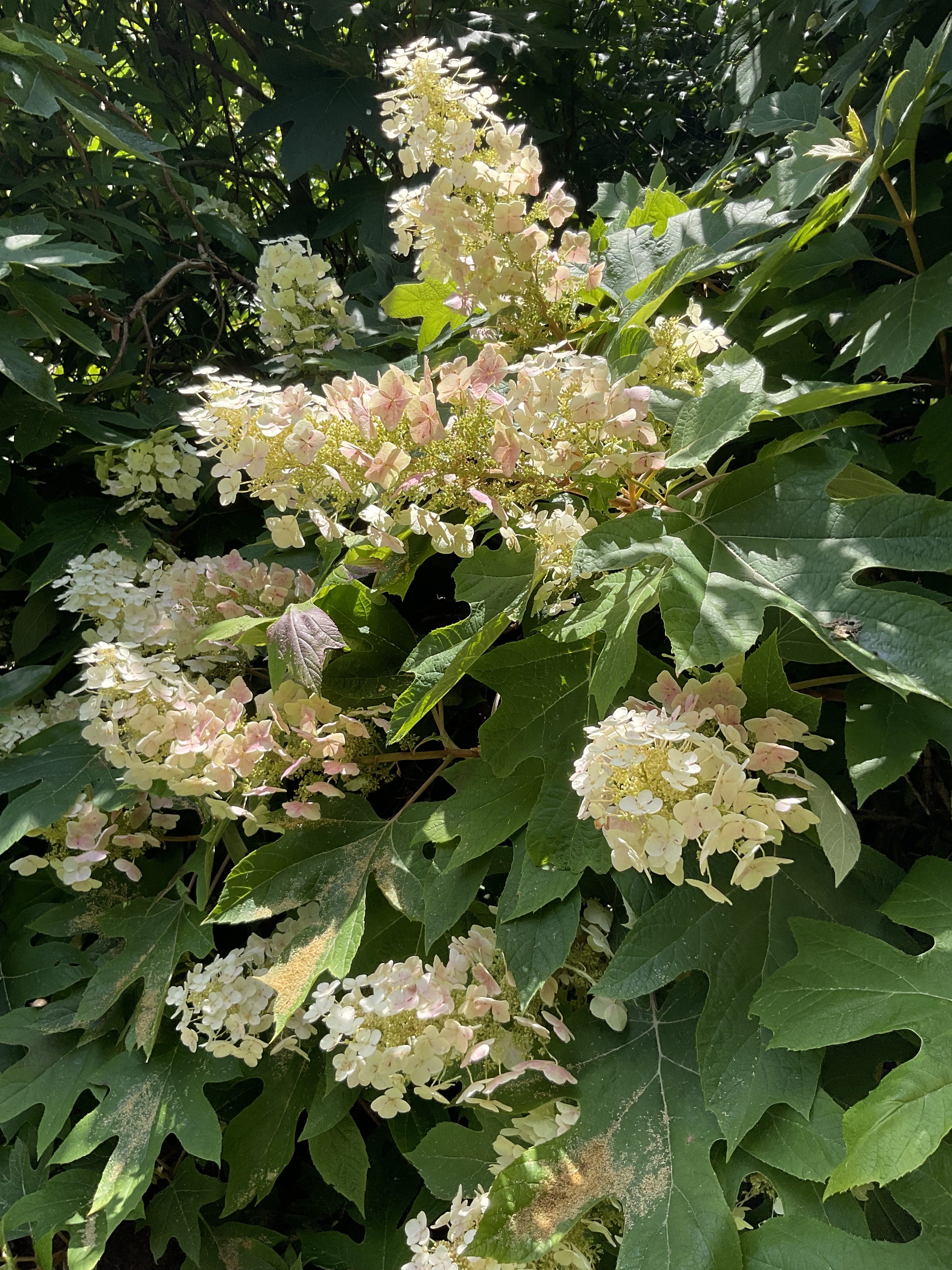
In nature, hydrangeas have either lace-cap or conical forms composed of many tiny fertile flowers accompanied by larger showy 4-petaled flowers that are sterile. The only purpose of the sterile flowers is to attract the attention of pollinators, directing them to the real flowers – the tiny ones loaded with pollen and nectar.
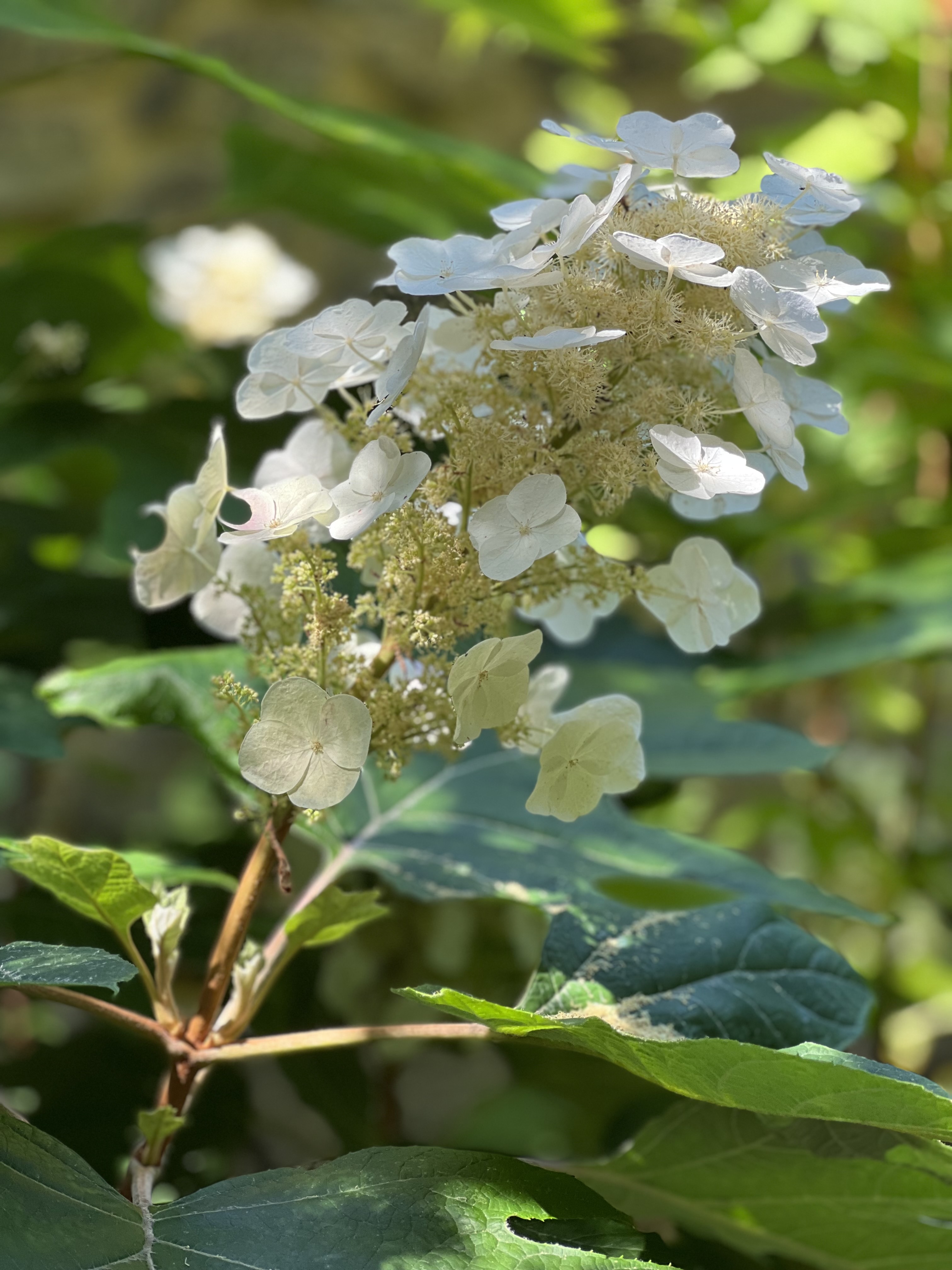
flowers inside
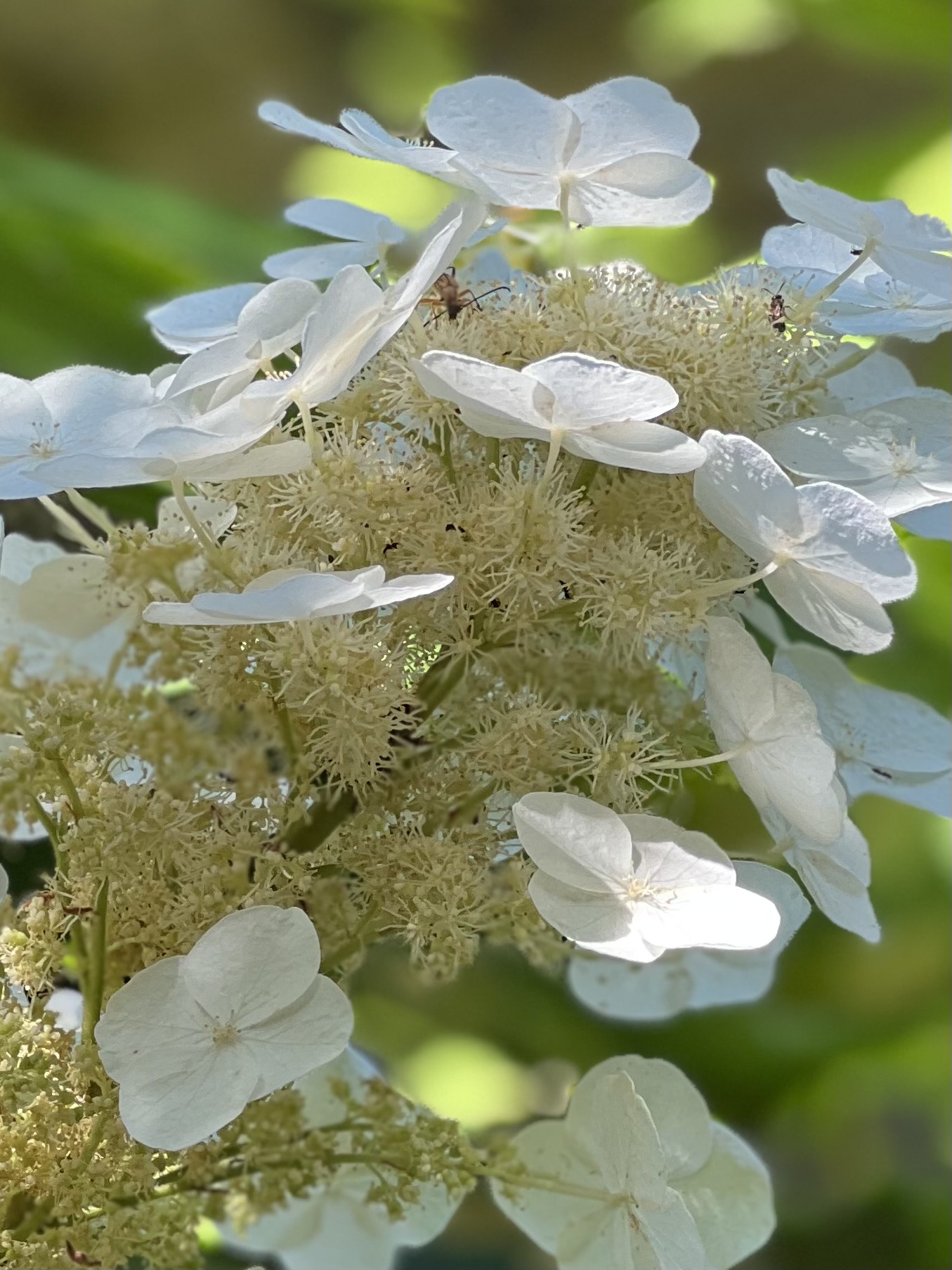
For bees, the sterile flowers on hydrangeas are just advertising. For humans, the sterile flowers are the pretty part. So, for hundreds of years, humans have been manipulating hydrangeas with selective breeding and genetic modification to create panicles with more showy sterile flowers and fewer — or zero — fertile flowers. The heavily-modified hydrangeas are spectacular to human eyes, but useless to pollinators.
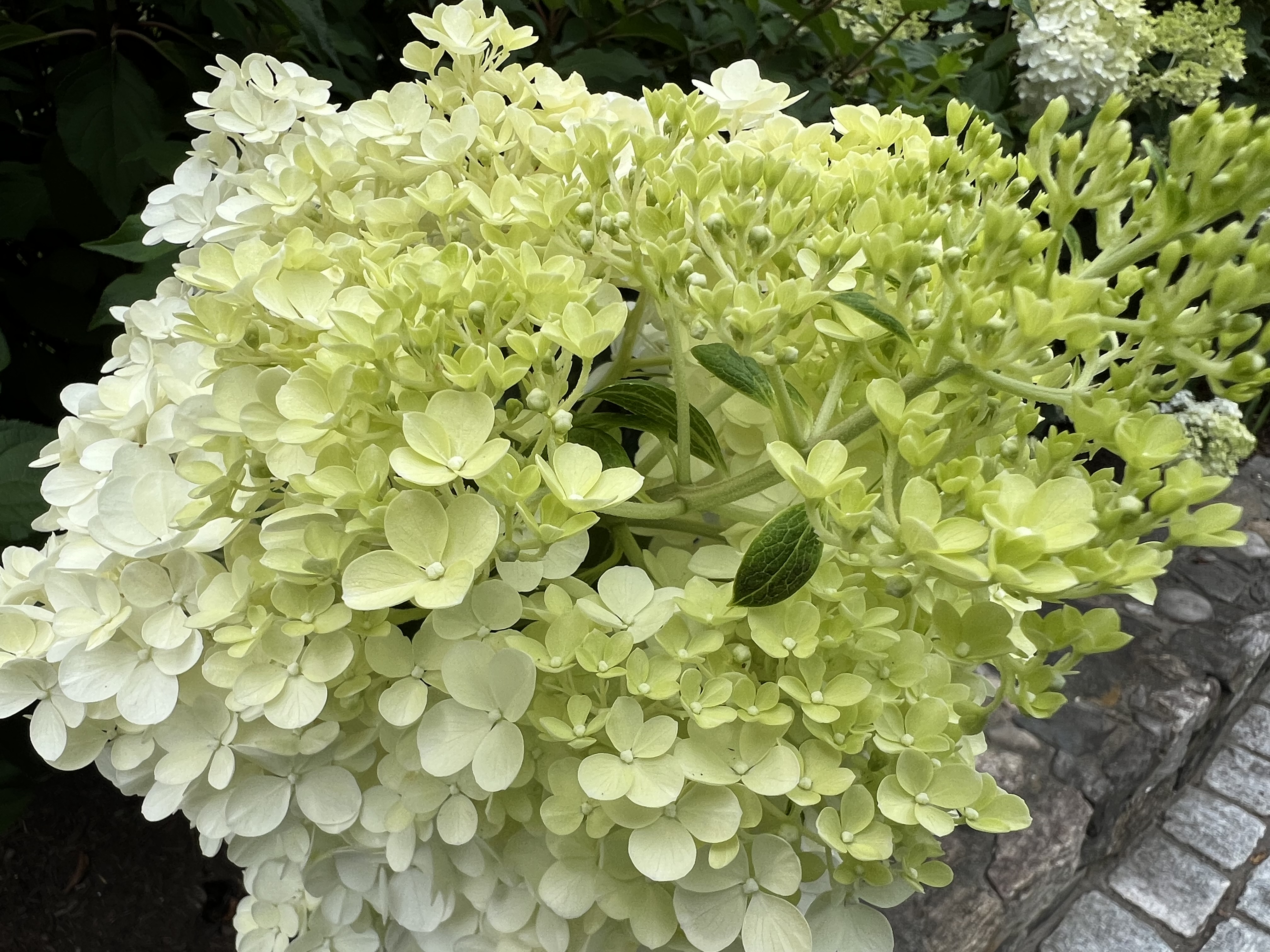
fertile flowers at all, and produce no pollen or nectar
The intentional modification of hydrangea flowers has crossed continents and hydrangea species. Many of the most popular hydrangeas in gardens today are mophead versions developed from the Asian species, Hydrangea macrophylla, or big-leaf hydrangea. You recognize these as the big round flowers that are pink or blue depending on the acidity of the soil, but they are also available in white, pale green, hot pink, and other colors. In fact, there are countless varieties of heavily-modified Asian hydrangea species on the market, including the popular tree form “Pee Gee” and the enormous conical flowers of “Limelight,” both modifications of the Asian Hydrangea paniculata.
Native North American species have been similarly modified to create fancy flowers. Hydrangea arborescens, or Smooth Hydrangea, is native to forests from New York to Ohio, and south from Oklahoma to Georgia. In the wild, it has flat-topped clusters of tiny white fertile flowers with occasional mutations adding a few sterile flowers scattered around the outer ring.
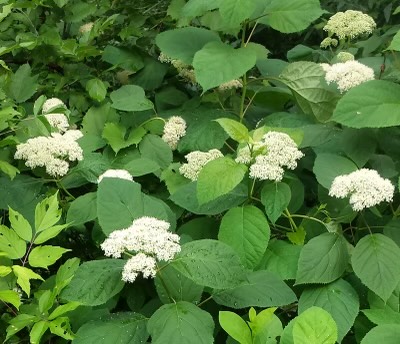
To make its flowers more appealing to humans, growers selected the mutated flowers and modified them dramatically to increase their number and size, eventually eliminating the fertile flowers altogether. The result was a plant with enormous mophead flowers that they labelled ‘Annabelle’ hydrangea, and introduced to the American market in the 1960’s. Since then, many other named varieties (‘Snowball,’ ‘Incrediball,’ ‘Invincibelle,’ etc.) have been developed to appeal to gardeners. Unfortunately, these showy mophead forms offer nothing to bees because the fertile flowers have been manipulated out of existence.
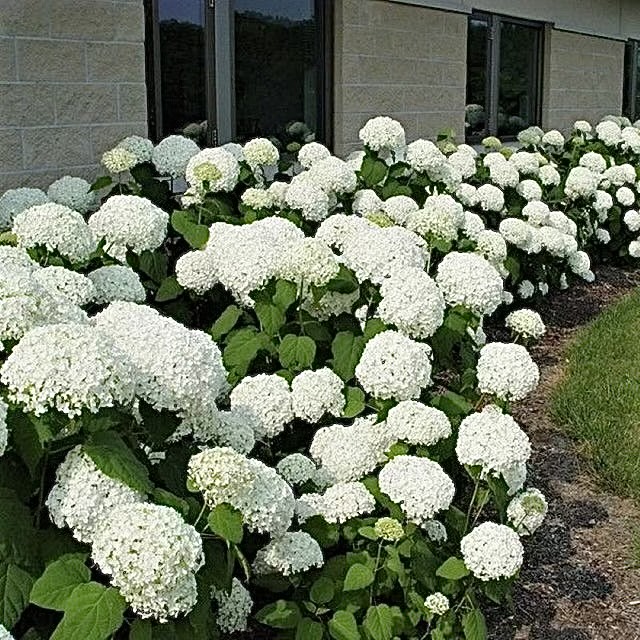
have made this native plant useless for bees.
Photo from nursery advertisement
Even our excellent native shrub, Oakleaf Hydrangea (Hydrangea quercifolia), has been targeted for flower modifications by growers. Oakleaf Hydrangea naturally has large conical flowers that emerge white and gradually turn pink. They are beautiful and loaded with fertile flowers that are an important source of nectar and pollen for bees. (For more information on Oakleaf Hydrangea, click here.)
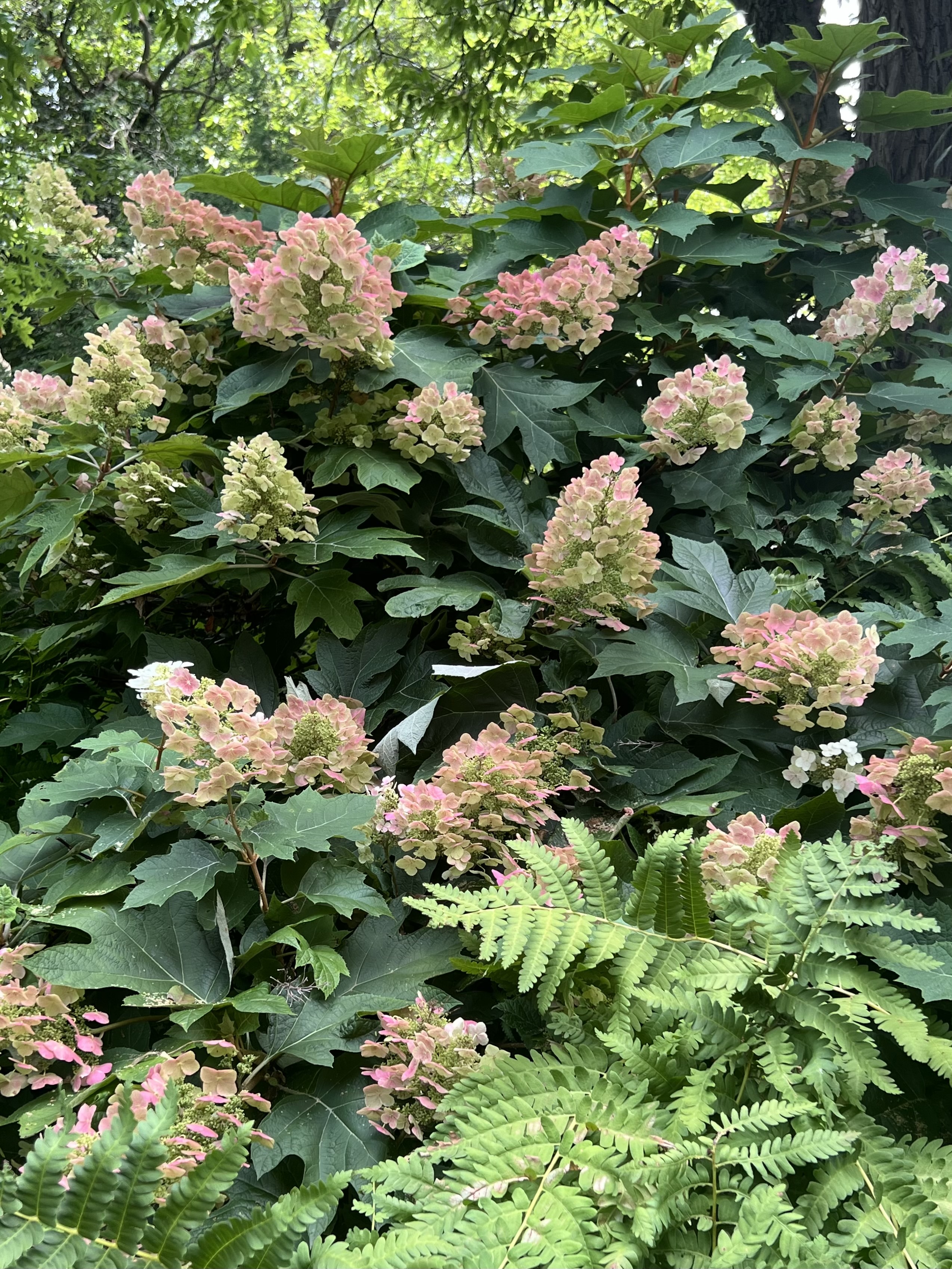
but grows well in gardens throughout the mid-Atlantic region
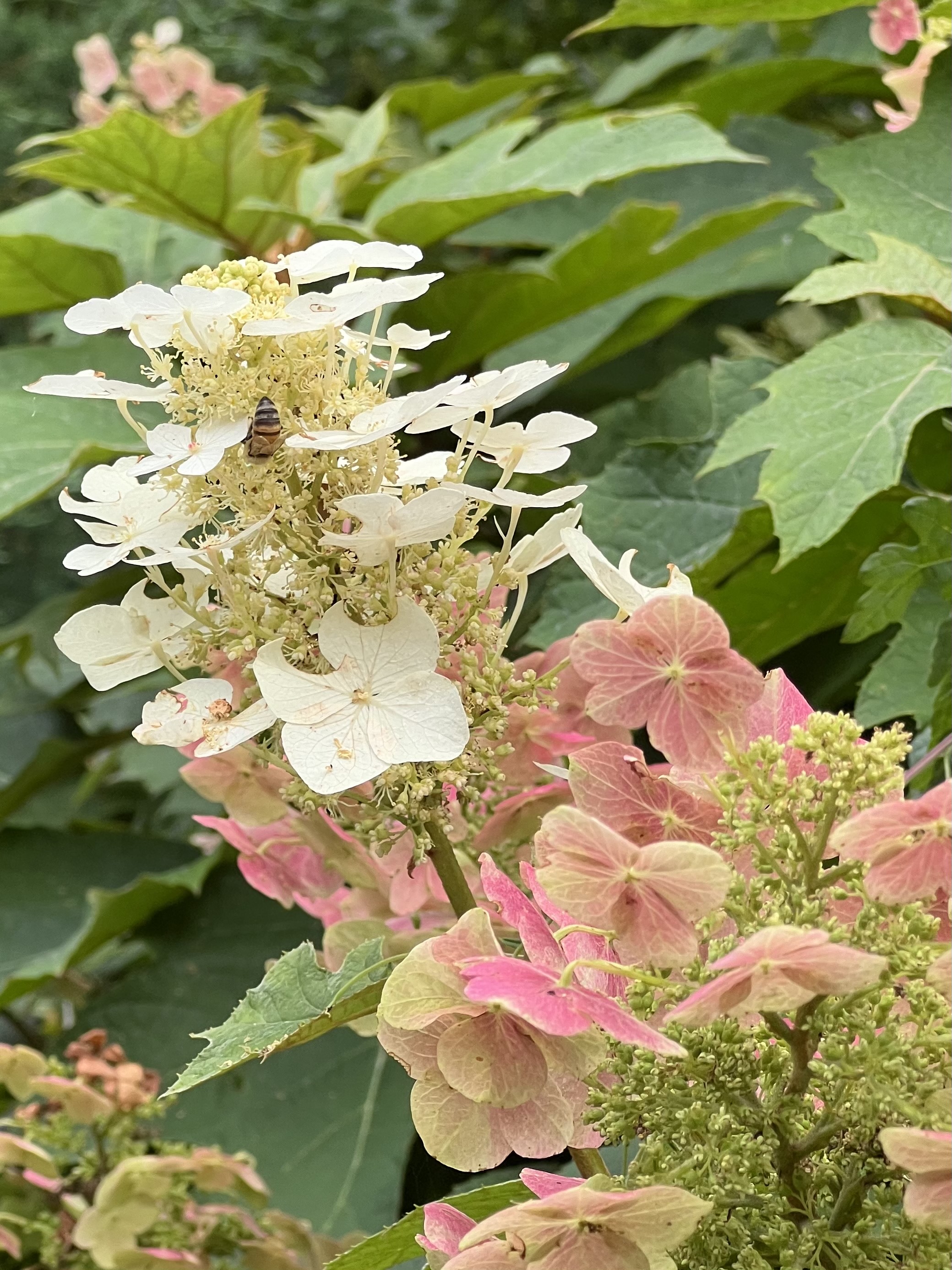
Apparently not satisfied with an already excellent and garden-worthy native plant, the nursery industry has introduced cultivars of Oakleaf Hydrangea with flowers so altered that they have no remaining value to bees.
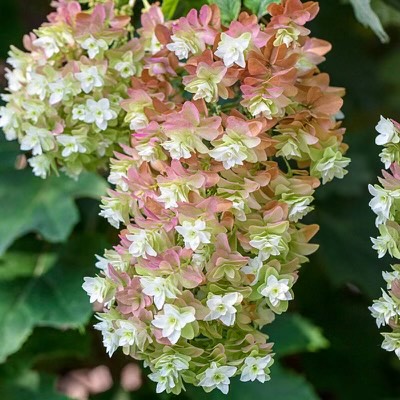
has eliminated fertile flowers completely
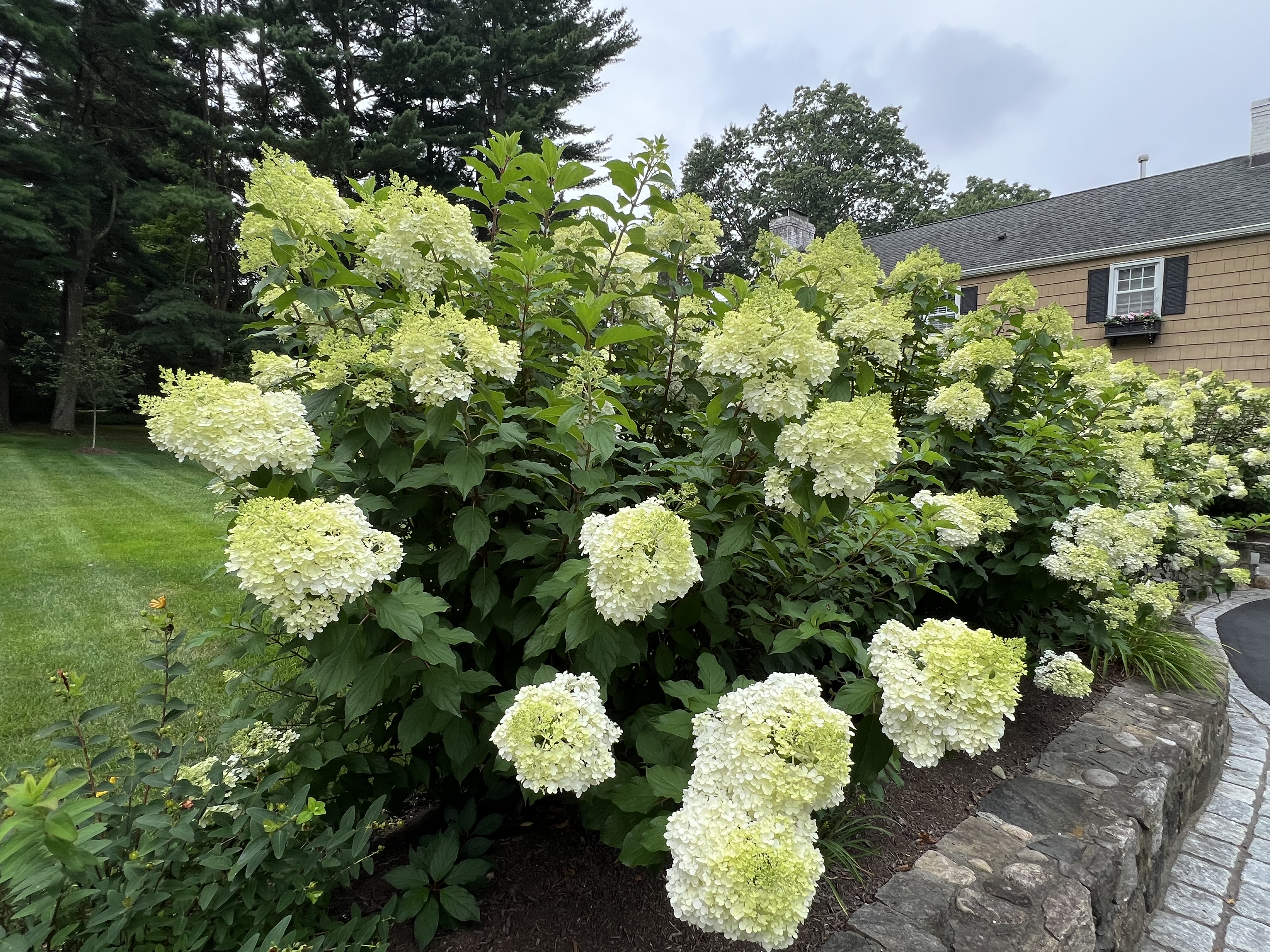
this Asian hydrangea do not support bees
Open conical flowers with large clusters of fertile flowers inside, like natural Oakleaf Hydrangea flowers, are a feast for bumblebees and other pollinators. And lace-cap flowers, whether Asian or native, because they are formed with large clusters of fertile flowers in the center, attract many species of bees.
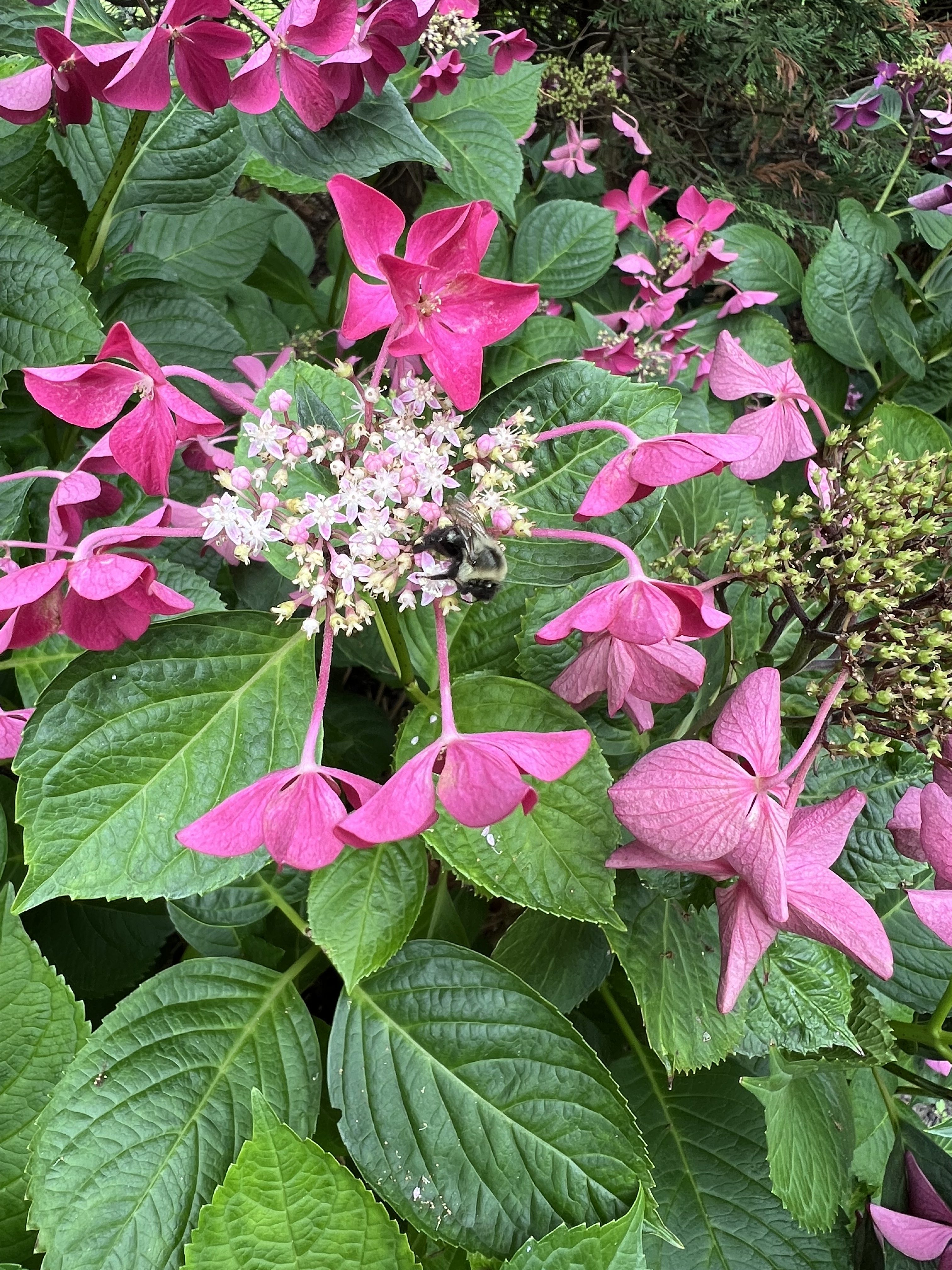
In a recent 5-year trial at the Mt. Cuba Center in Delaware, 29 cultivars of the native Smooth Hydrangea, including 16 mophead and 13 lace-cap varieties, were evaluated for garden appeal and performance. https://mtcubacenter.org/lacecap-hydrangeas-take-top-marks/ Investigators also monitored each of the plants for pollinator visits, extrapolating the results over the growing season. They found that lace-cap flowers were visited by pollinators at 3½ times the rate of mophead flowers. Although they did not report on the duration of visits, they did observe that bees approached the mophead flowers, but apparently did not often find reason to stay.
So, if we care about bees, flower shape matters!
For gardeners who love hydrangeas and also care about bees, the best bet is to include lace-cap and open conical flower forms with plenty of fertile flowers in your garden. Native Oakleaf Hydrangeas in natural form and native Smooth Hydrangeas in lace-cap form (like ‘Haas’ Halo’) are widely available at nurseries. And if you love the bright colors and playful shapes of the Asian lace-caps, they are a much better choice than the mopheads.
Go ahead and enjoy your mophead hydrangeas – they are harmless and we all love them. But think about adding a few lace-caps or conical forms with lots of fertile flowers for our bee friends.
You’ll love them, too!
